
As the back-to-school season approaches, it’s the perfect time to think about starting a simple herb garden with your family. Growing herbs together can bring fresh flavors to your meals and is a fun, hands-on project that kids will love. Even for busy families, there are many easy-to-grow herbs and creative ideas that can fit into your daily life.
Imagine the joy of picking fresh basil, mint, or thyme from your very own garden! Involving your children in this process can make cooking together even more special. Plus, it’s a great way to spend time as a family and teach your kids about nature, food, and healthy eating habits. Get ready to transform your cooking and family time with this exciting and simple activity!
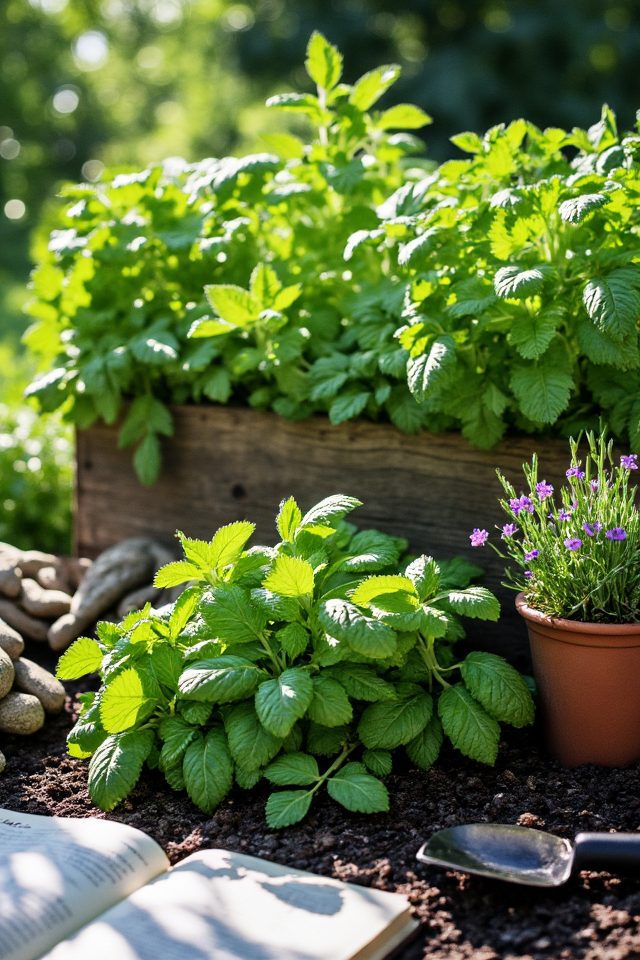
When choosing the right herbs for your garden, consider factors such as climate, space, and personal taste.
Popular options for beginners include basil, parsley, and mint, as they’re easy to grow and versatile in cooking.
Additionally, think about whether you want to grow annuals or perennials, as this will affect your garden’s longevity.
Ultimately, select herbs that you enjoy using, ensuring that your garden is both functional and rewarding.
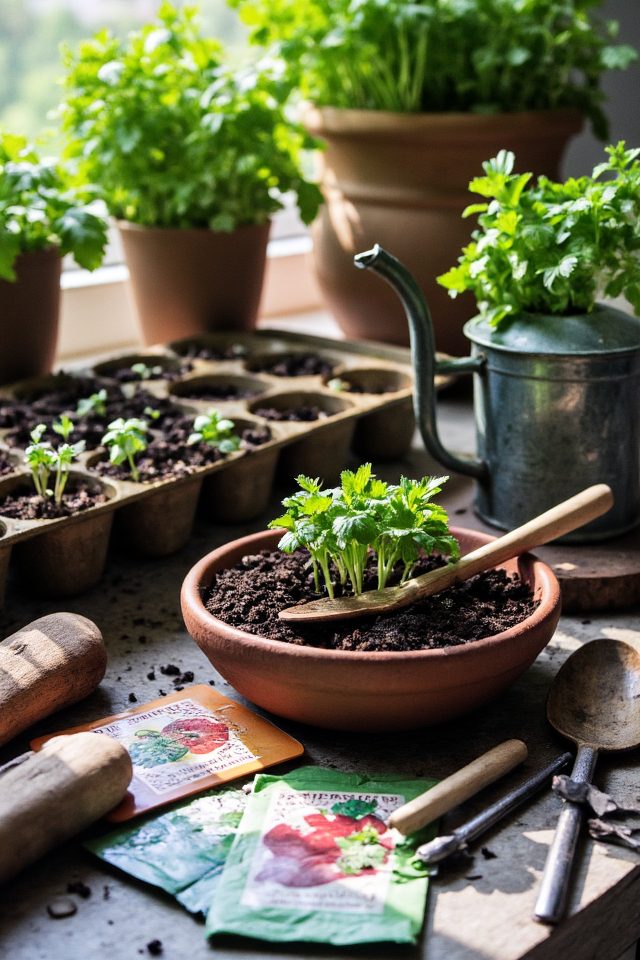
Starting herbs from seeds is an exciting and rewarding way to kick off your back-to-school herb garden.
Begin by selecting your favorite herbs such as basil, parsley, or cilantro, and gather seed trays or small pots. Fill them with a quality potting mix, plant the seeds according to package instructions, and gently water them.
Place the trays in a warm, sunny spot, and keep the soil consistently moist. Soon, you’ll see your herb garden thrive, providing fresh flavors for your culinary creations!
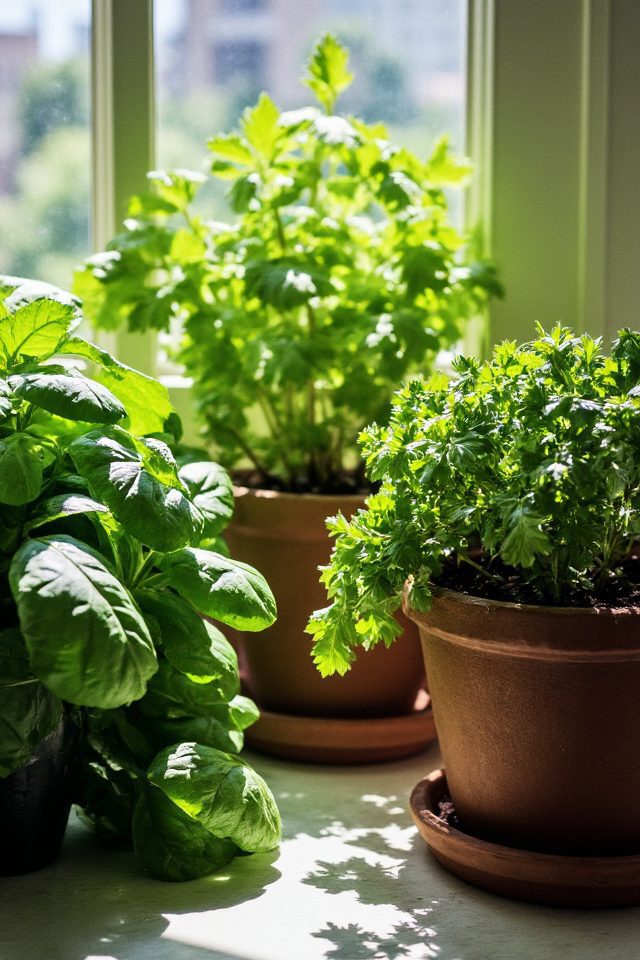
Growing herbs in pots is a rewarding and space-efficient way to start your back-to-school herb garden.
Choose a variety of herbs like basil, parsley, and thyme, which thrive in containers. Use good-quality potting soil and guarantee pots have drainage holes.
Place your pots in a sunny spot, and water them regularly, allowing the top inch of soil to dry out between waterings.
Not only will you enjoy fresh herbs for cooking, but it also adds a touch of greenery to your study space!
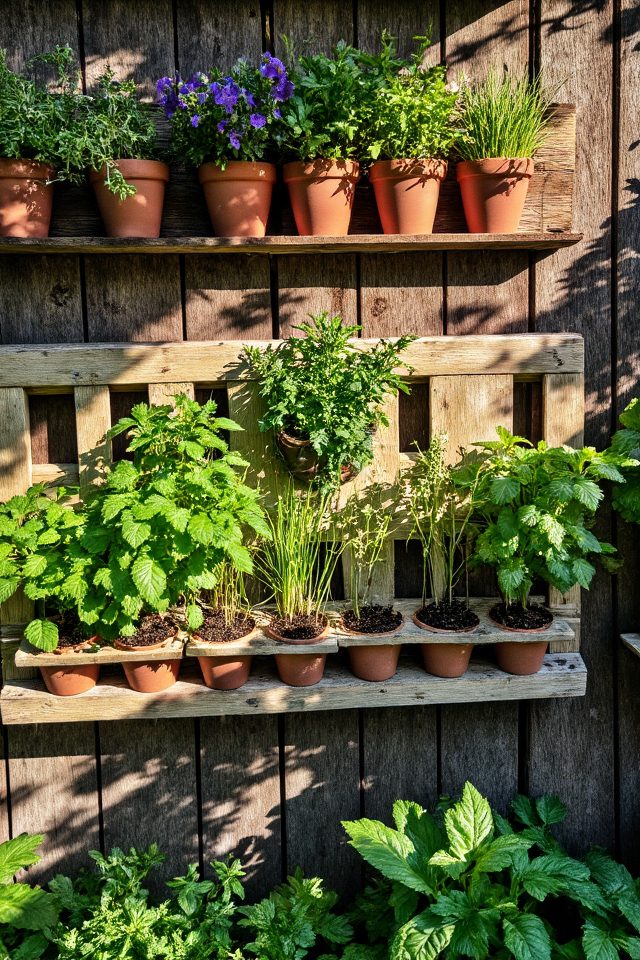
Vertical herb gardens are a creative solution for limited space, making them ideal for back-to-school projects.
These gardens can be crafted using wall-mounted planters, repurposed pallets, or even hanging shoe organizers filled with soil and herbs. They not only provide fresh herbs for culinary use but also add an aesthetic appeal to any environment.
Engaging students in the setup and maintenance fosters responsibility while offering an excellent hands-on gardening experience.
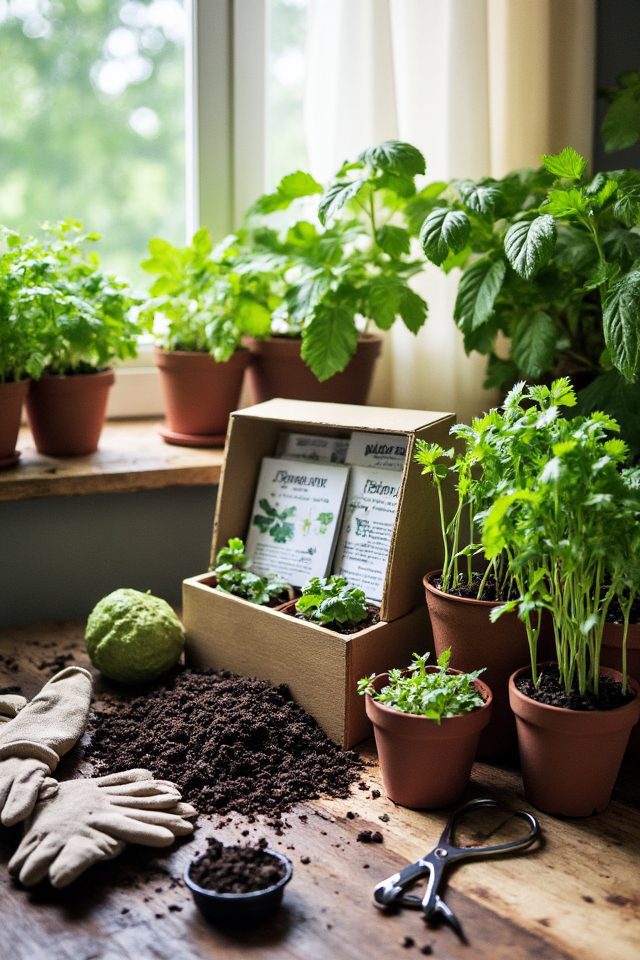
Herb garden kits for beginners are a fantastic way to introduce children and adults alike to the joys of gardening.
These kits typically include everything needed to start growing herbs, such as seeds, soil, pots, and easy-to-follow instructions. They often feature popular herbs like basil, parsley, and cilantro, making it simple to cultivate fresh ingredients for meals.
Perfect for back-to-school projects, these kits foster responsibility and a love for nature while providing delicious flavors for upcoming culinary adventures.
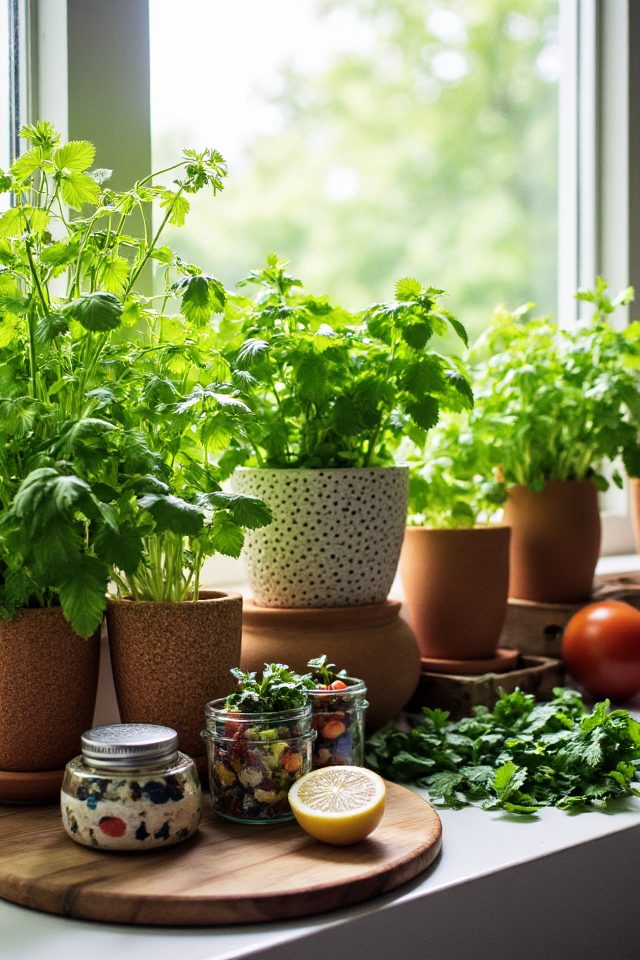
Indoor herb gardening is a fantastic way for students and families to cultivate their green thumbs, even in limited space.
Using small pots or windowsill planters, you can easily grow herbs like basil, parsley, and mint. Not only does this provide fresh ingredients for culinary creations, but it also enhances air quality and adds a touch of nature indoors.
With adequate sunlight and water, an indoor herb garden can flourish throughout the school year.
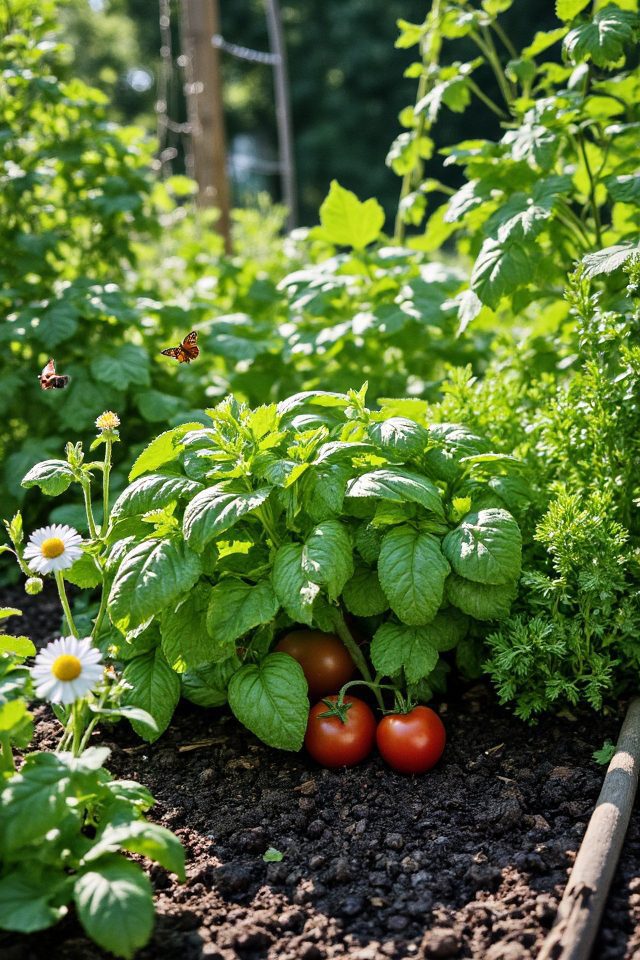
Companion planting is the practice of growing two or more plant species together for mutual benefit. In a back-to-school herb garden, this technique can enhance growth, deter pests, and improve flavor.
For example, basil thrives alongside tomatoes, helping to repel insects while boosting the tomato’s taste. Additionally, planting herbs with complementary growth habits can optimize space and resources, making your garden more productive and sustainable as students learn about gardening practices.
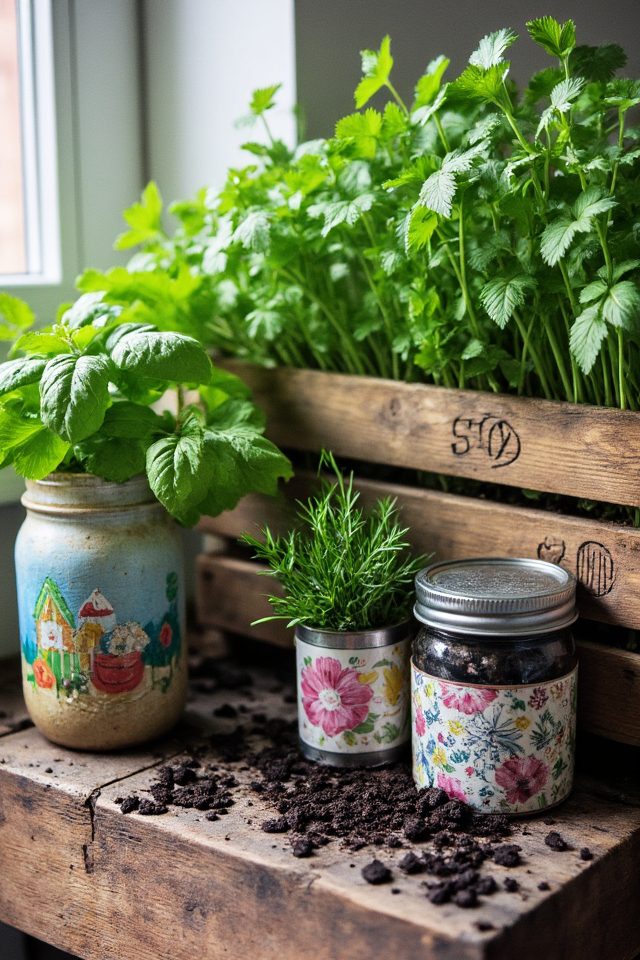
Using upcycled containers for herb gardening is a creative and eco-friendly way to cultivate your favorite herbs while reducing waste.
Everyday items like mason jars, tin cans, and wooden crates can serve as charming planters.
Guarantee proper drainage by adding holes to the bottom if needed, and personalize your containers with paint or labels.
This not only adds a unique touch to your garden but also teaches kids about recycling and sustainability as they grow their herbs.
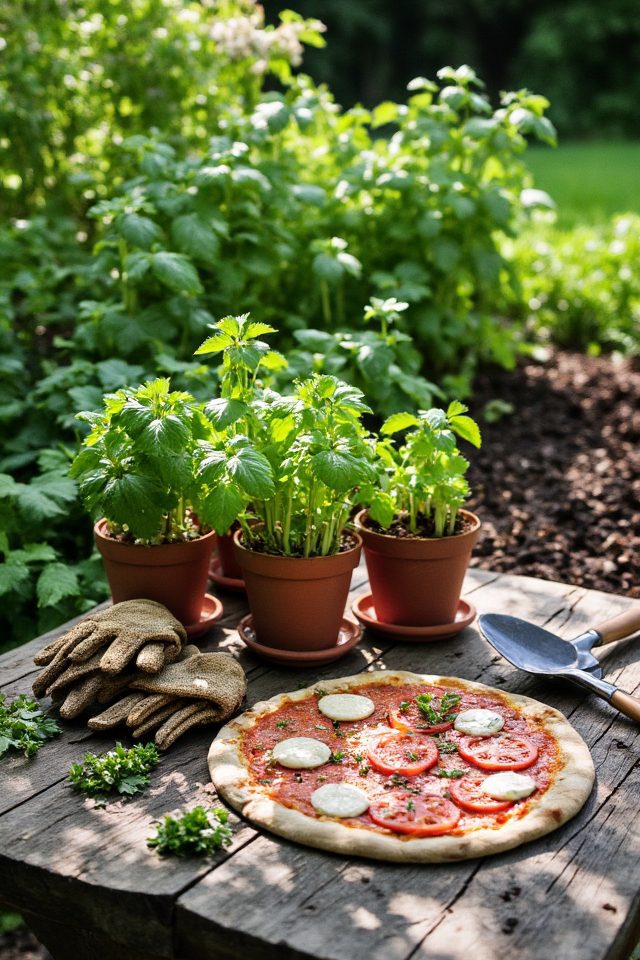
Creating a pizza herb garden is a fun and delicious way to enhance your culinary skills this school year.
Start by planting essential herbs like basil, oregano, thyme, and parsley in your backyard or in pots on a windowsill. These herbs thrive in sunny spots and require minimal maintenance.
When ready, snip fresh herbs to elevate your homemade pizzas, adding vibrant flavors that dry store-bought herbs simply can’t match.
Kids can get involved, learning about gardening while enjoying the fruits of their labor!
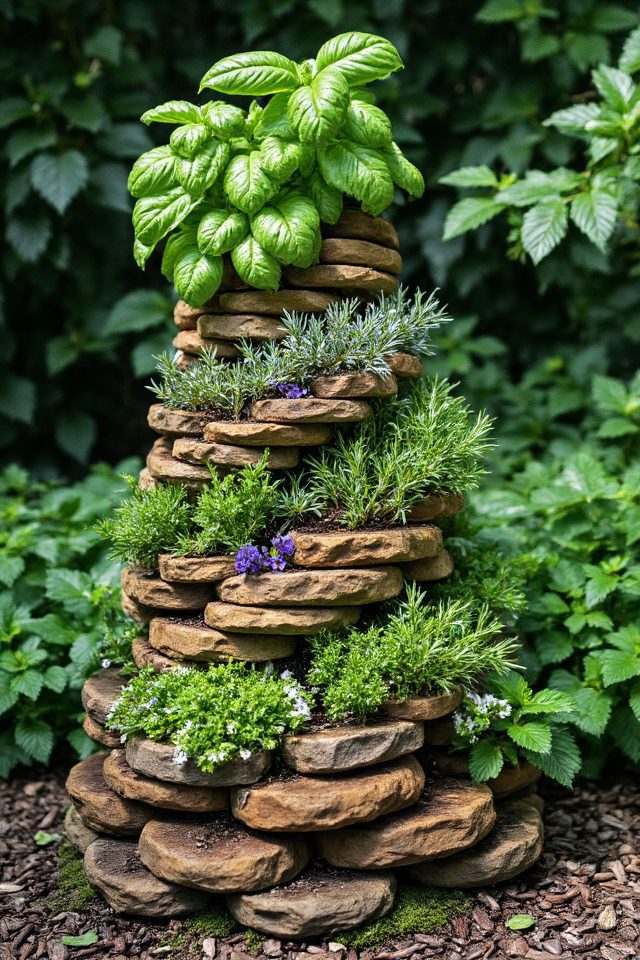
Designing a herb spiral is a creative and space-efficient way to cultivate herbs for your back-to-school garden. This vertical garden structure allows for a diverse range of microclimates, catering to different herb needs—sun-loving herbs thrive at the top while moisture-loving varieties flourish at the base.
To construct, arrange bricks or stones in a spiral shape, filling the interior with nutrient-rich soil. Not only does a herb spiral maximize space, it also adds visual interest and provides a sustainable supply of fresh herbs for culinary use.
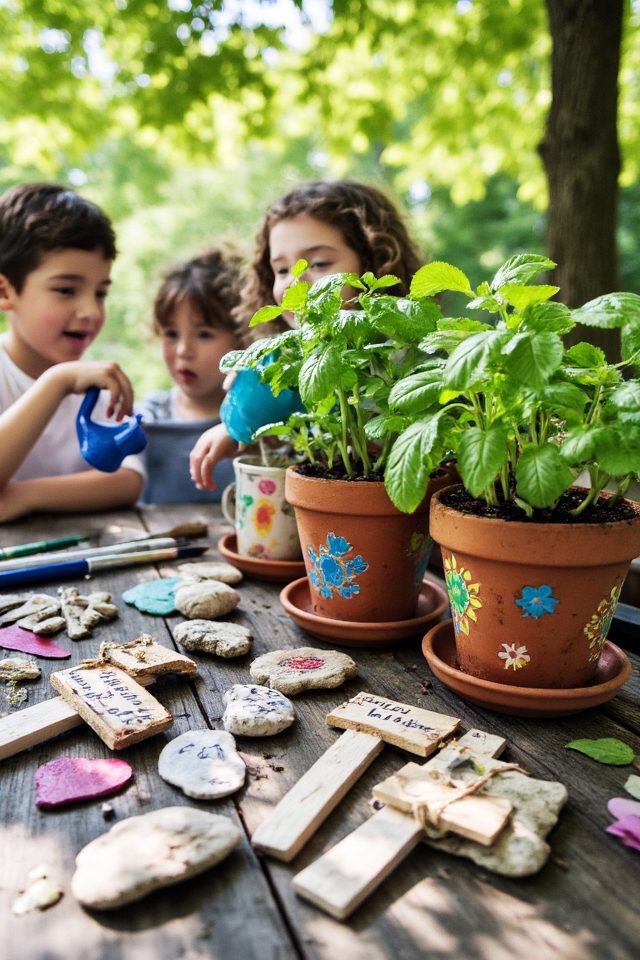
Herb garden craft projects for kids are a delightful way to blend creativity with gardening.
These projects can include decorating plant pots, creating labels for each herb, or crafting mini garden signs.
Children can also learn about seed germination by planting their favorite herbs, such as basil or mint, and watching them grow.
Not only do these activities foster a love for gardening, but they also encourage responsibility and an appreciation for fresh herbs in cooking.

Creating fun labels for your herb garden adds a personal touch and makes it easier to identify your plants. Use colorful markers or paint to craft unique signs, incorporating playful names or puns related to each herb, like “Basil-ic Blessings” or “Thyme Traveler.”
You can also involve kids in the labeling process, turning it into a fun, educational activity. Consider using recycled materials like wooden spoons or garden stakes for an eco-friendly touch that enhances your garden’s charm!
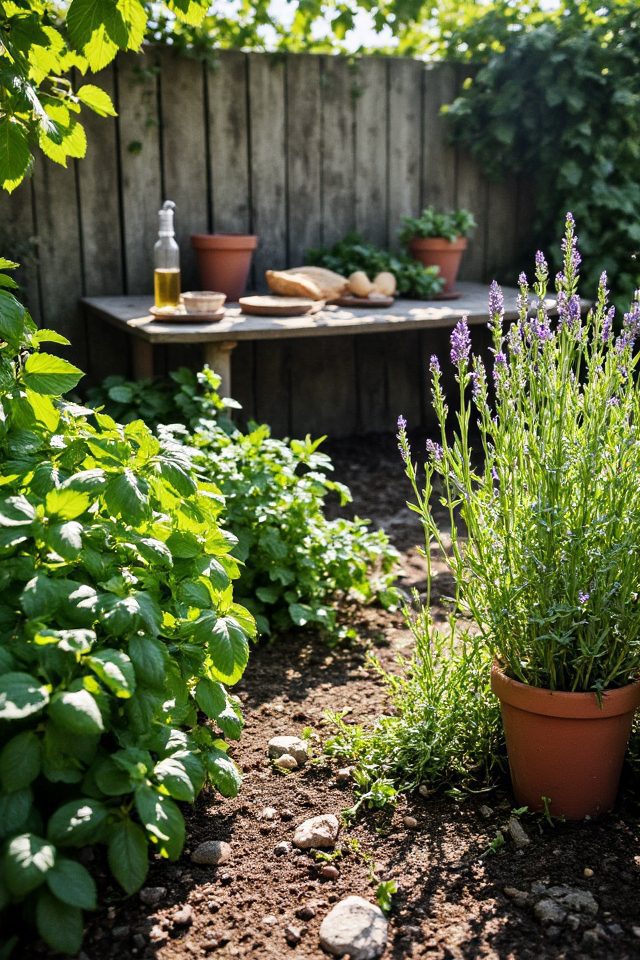
Creating a themed herb garden inspired by Mediterranean flavors is an exciting way to enhance your cooking and bring a taste of the sun-soaked coasts to your home.
Incorporate aromatic herbs like basil, oregano, rosemary, and thyme, which are staples in Mediterranean cuisine. These herbs thrive in warm, sunny conditions and can be easily grown in pots or garden beds.
Not only do they add vibrant flavors to dishes, but they also provide a fragrant backdrop for any outdoor space.
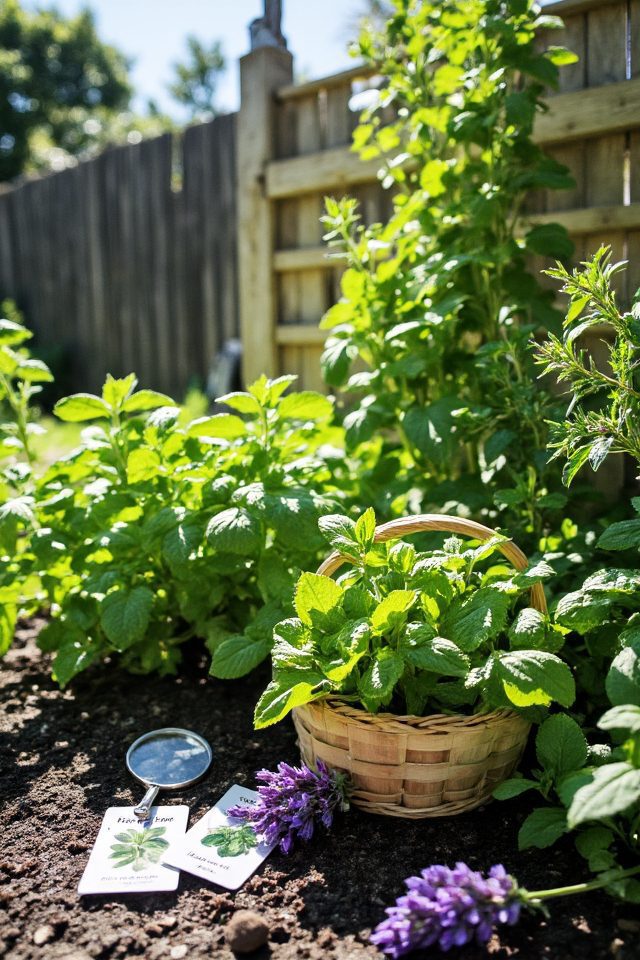
Herb scavenger hunts are a fun and educational way to engage kids with gardening!
Create a list of common herbs—like basil, mint, and rosemary—and challenge them to find each one in your garden.
This activity not only enhances their observational skills but also teaches them about different herbs’ scents and uses.
To make it more exciting, consider offering small rewards for each herb found, turning learning into an enjoyable adventure!
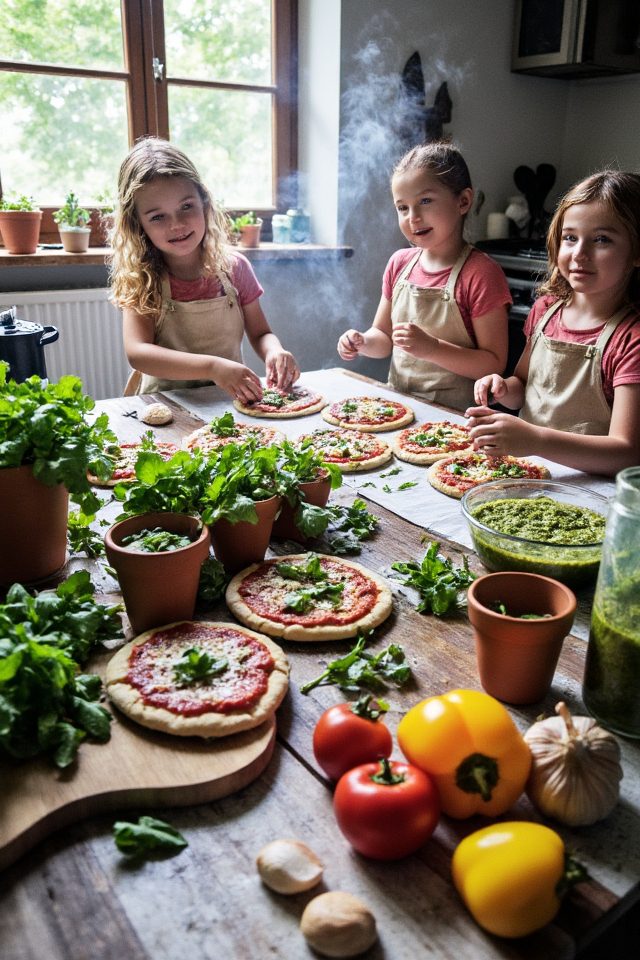
Cooking with kids can be a delightful and educational experience, especially when incorporating fresh herbs from your back-to-school herb garden. Engaging children in the kitchen allows them to explore flavors, scents, and textures while developing essential cooking skills.
Recipes like herb-infused pasta, mini pizzas topped with fresh basil, or homemade pesto are fantastic ways to introduce kids to the joy of cooking. Plus, using herbs from their own garden adds an exciting element of ownership and creativity!
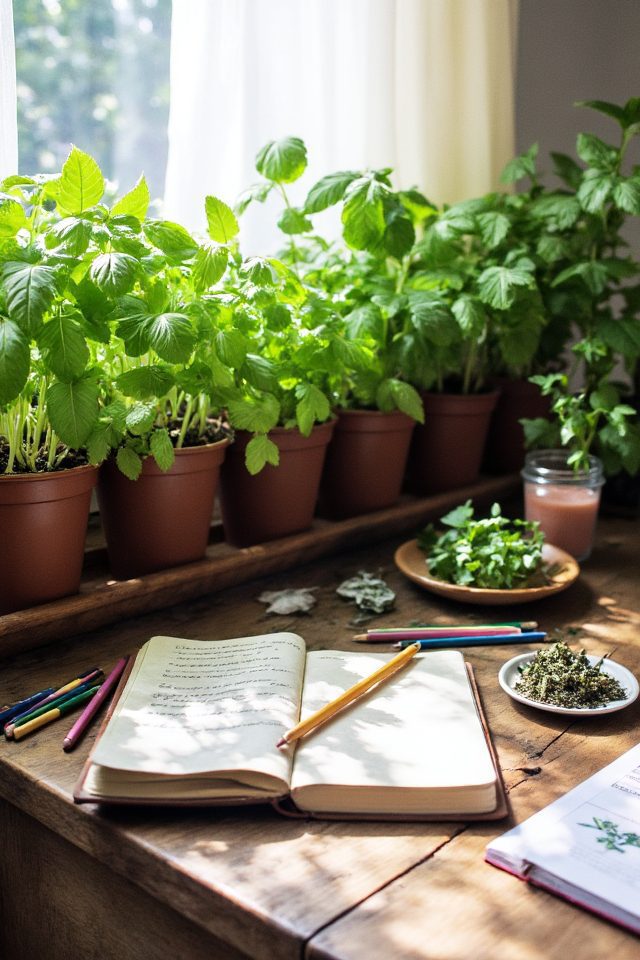
Educational herb garden journals are a fantastic way for students to document their gardening experiences while enhancing their learning.
These journals can include sections for plant growth observations, care notes, and even recipes using their harvested herbs. By encouraging students to sketch their plants and record changes over time, they develop their observational and writing skills.
Additionally, incorporating lessons on botany and ecology into their journal entries fosters a deeper appreciation for nature and sustainability.

DIY herb drying and storage is a fun and practical way to preserve your homegrown herbs for future use. Start by harvesting your herbs when they’re at their peak flavor.
You can dry them using methods like air drying, using a dehydrator, or even baking them in the oven at low temperatures. Once dried, store them in airtight jars or containers, labeled with the herb name and date.
This not only keeps your kitchen stocked with flavors but also adds a personal touch to your culinary creations.
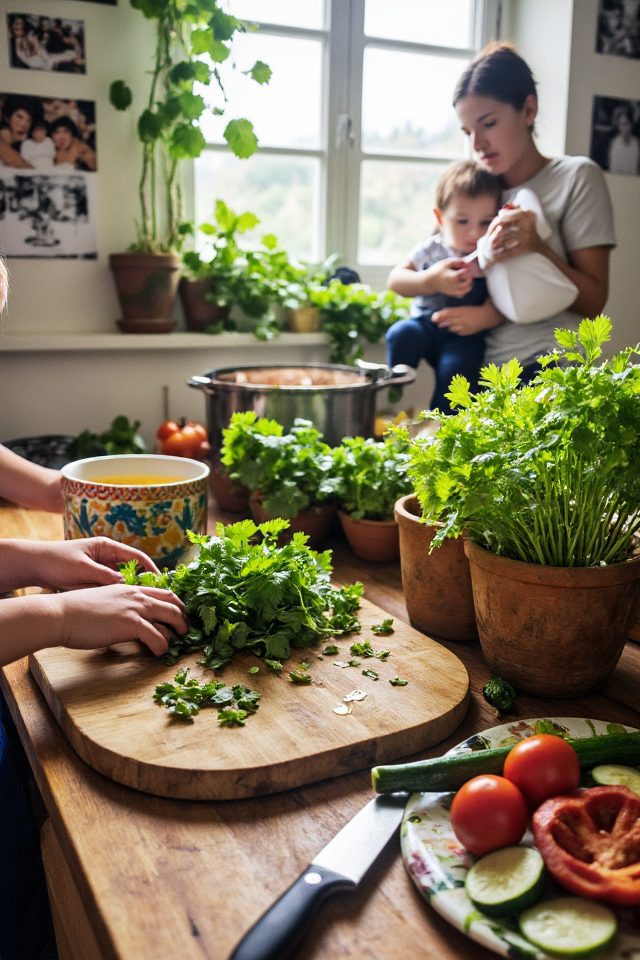
Incorporating herbs into family meal prep not only enhances flavors but also promotes healthy eating habits.
Fresh herbs like basil, parsley, and cilantro can be easily harvested from your back-to-school herb garden and added to a variety of dishes. Use them in salads, sauces, marinades, or as garnishes to elevate the taste of simple meals.
Engaging the whole family in herb harvesting and meal preparation can also create a fun, educational experience, fostering a love for cooking and fresh ingredients.
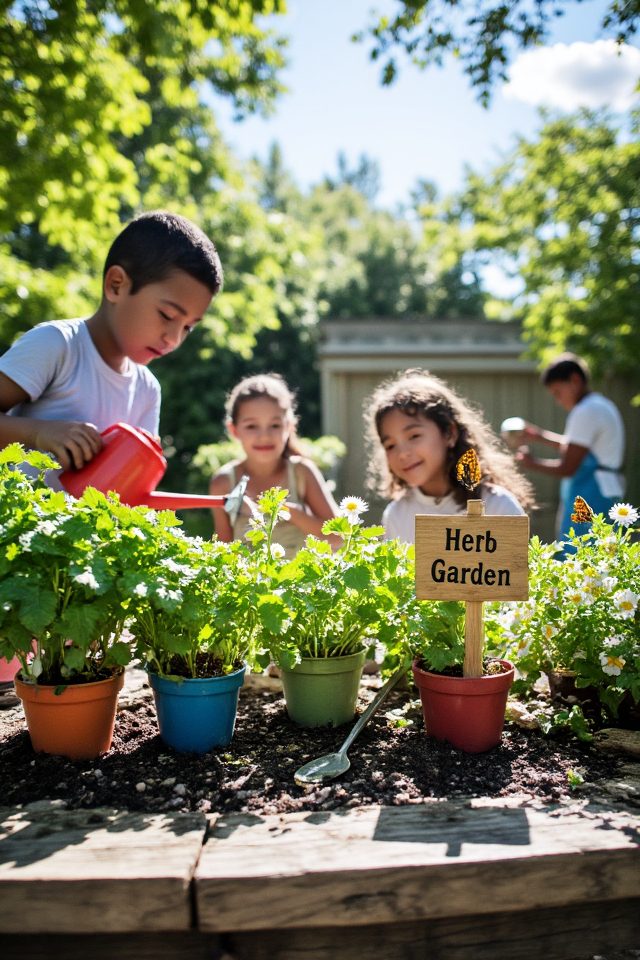
Gardening can be a rewarding after-school activity for kids, offering both creativity and education.
Cultivating an herb garden not only teaches them about nature and responsibility but also allows them to explore flavors and cooking. Kids can enjoy planting, watering, and watching their herbs like basil, parsley, and mint grow, fostering a sense of accomplishment.
Additionally, this hands-on experience enhances their understanding of ecology while promoting healthy eating habits.
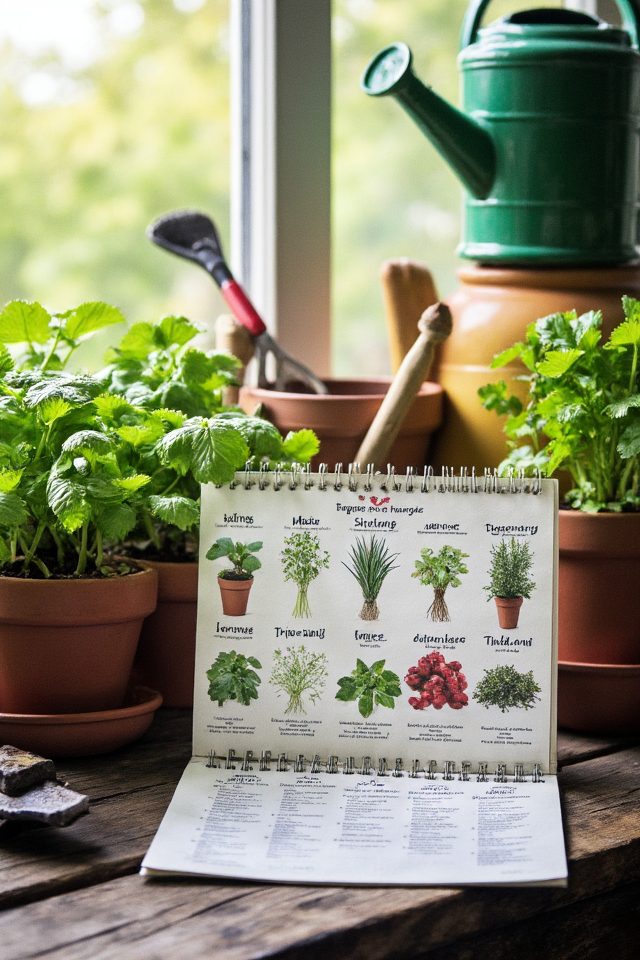
A seasonal herb planting calendar is an essential tool for aspiring gardeners, helping them effectively plan and cultivate their herb gardens.
It outlines the best times to sow seeds or transplant seedlings for various herbs, ensuring ideal growth and flavor.

When it comes to creating a kid-friendly garden, the right tools can make all the difference. Look for small, lightweight hand tools designed for little hands, such as trowels, rakes, and watering cans.
Brightly colored tools can engage children and make gardening fun! Additionally, consider gloves made from breathable materials to protect young hands.
These tools not only foster a sense of responsibility and accomplishment but also encourage a love for nature as children cultivate their own herb garden.
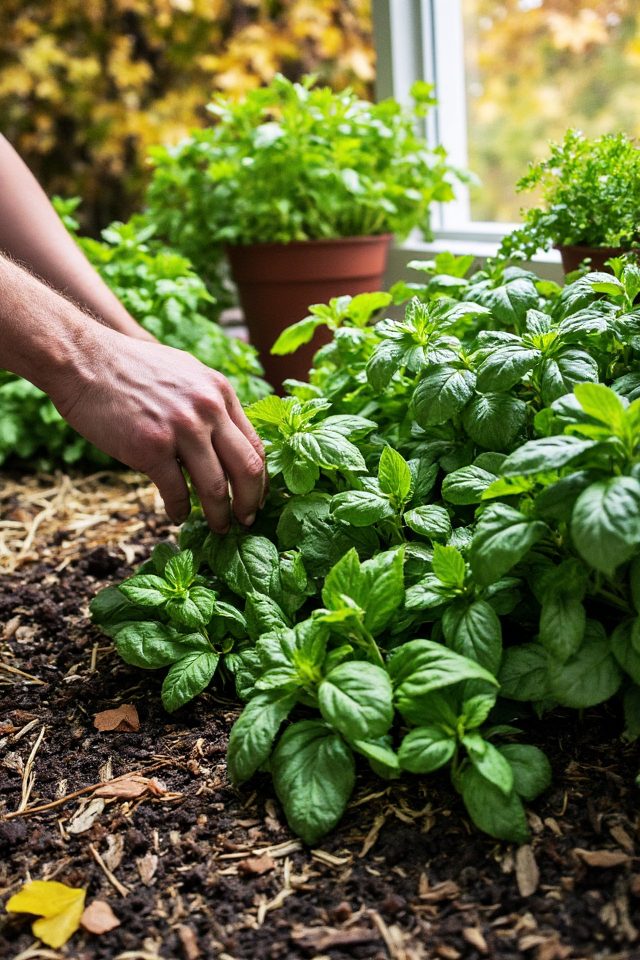
As the days grow shorter and temperatures cool in the fall, maintaining your herb garden requires some special attention.
Start by trimming back any overgrown plants to encourage new growth and prevent disease.
Mulching helps insulate roots and retain moisture.
Consider bringing potted herbs indoors, placing them in a sunny window to extend your harvest.
Regularly check for pests and continue watering judiciously, ensuring your herbs remain healthy through the changing seasons.
Starting a back-to-school herb garden is a rewarding way for your family to grow fresh flavors and bond together. By choosing easy herbs, getting kids involved in gardening, and experimenting with cooking, you’ll cultivate not just plants, but also a love for healthy eating. Don’t forget to make it fun with themed gardens and scavenger hunts! With a little planning and care, you’ll create a thriving herb garden that brings joy throughout the school year.

Don't let aphids, slugs, and caterpillars ruin another plant. Take back control with simple, natural methods that actually work.